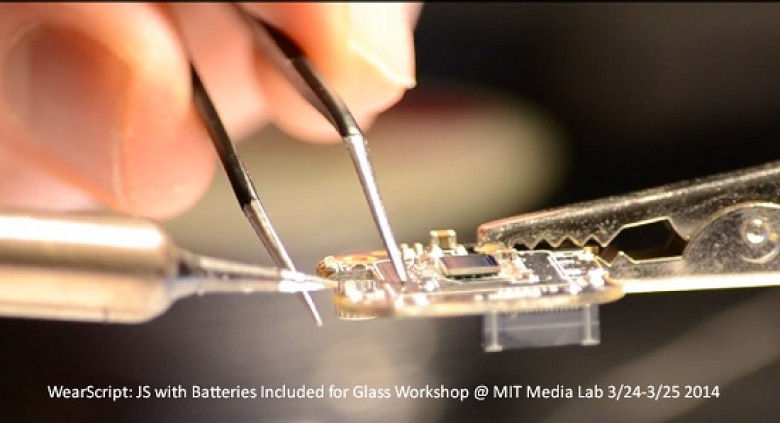MIT researchers bring Javascript to Google Glass
Earlier this week, Brandyn White, a PhD candidate at the University of Maryland, and Scott Greenberg, a PhD candidate at MIT, led a workshop at the MIT Media Lab to showcase an open source project called WearScript, a Javascript environment that runs on Google Glass. The category of wearables is still evolving. Besides activity trackers and smartwatches, the killer wearable app is yet to be discovered because wearables don’t have the lean back or lean forward human-machine interface (HMI) of tablets and smartphones. Wearscript lets developers experiment with new user interface (UI) concepts and input devices to push beyond the HMI limits of wearables.
The overblown reports of Google Glass privacy distract from the really important Google Glass discussion - how Glass micro apps can compress the time between user intent and action. Micro apps are smaller than apps and are ephemeral because they are used in an instant and designed to disappear from the user's perception once completing their tasks. Because of the Glass wearable form factor, micro apps deviate from the LCD square and touchscreen/keyboard design of smartphone, tablet, and PC apps, and are intended to be hands-free and responsive in the moment. Well-designed Glass apps employ its UI to let the user do something that they could not otherwise do with another device. Glass’s notifications are a good example of this; want to get breaking news or preview important email without interruption from a phone or PC? Tilt your head up slightly and capture it in a glance, but if you want to read the news or give a detailed response to an email – better to pick up a smartphone, tablet or PC. The best consumer-facing Google Glass experiences highlight how apps can leverage this micro app programmable wearable form factor.










































































